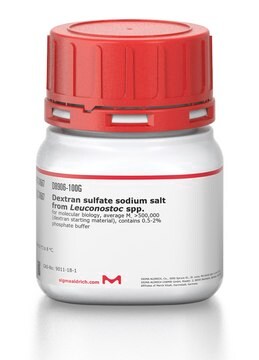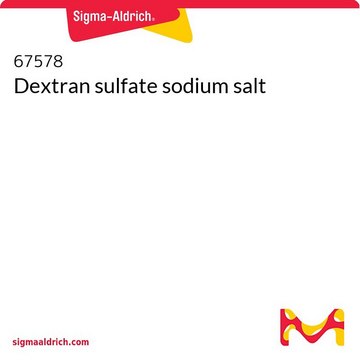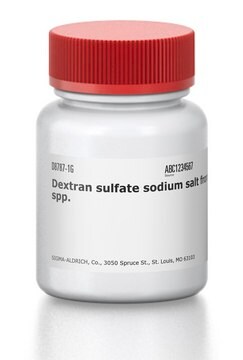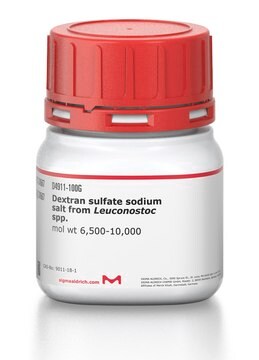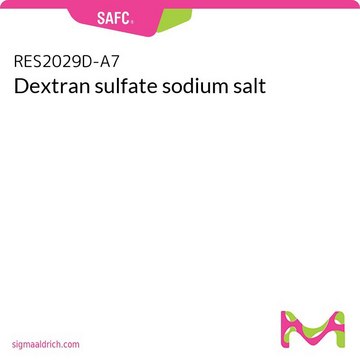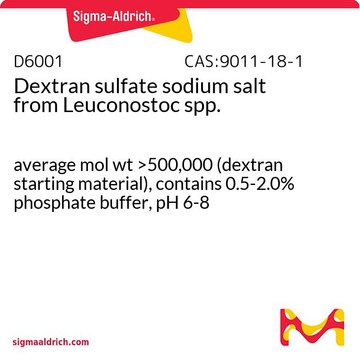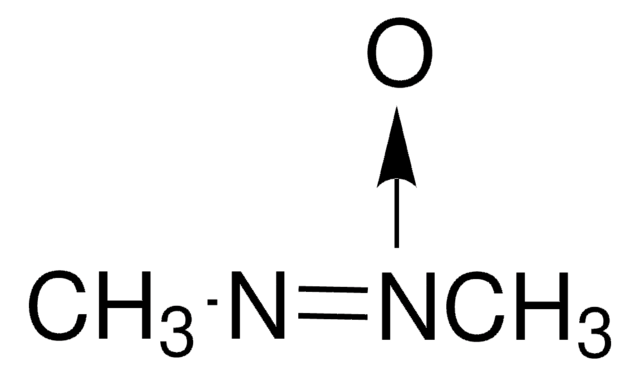D6924
Dextransulfat Natriumsalz aus Leuconostoc spp.
average mol wt 9,000-20,000
About This Item
Empfohlene Produkte
Biologische Quelle
bacterial (Leuconostoc mesenteroides)
Qualitätsniveau
Form
powder
Optische Aktivität
[α]/D 90 to 105 °, c = 6% (w/v)
Mol-Gew.
average mol wt 9,000-20,000
Zusammensetzung
Sulfur Content, 16.0-19.0%
Farbe
white to off-white
Nützlicher pH-Bereich
5.5 - 8.0
Löslichkeit
H2O: 100 mg/mL
Lagertemp.
room temp
Suchen Sie nach ähnlichen Produkten? Aufrufen Leitfaden zum Produktvergleich
Allgemeine Beschreibung
Anwendung
- to evaluate the participation of sulfated glycans on the interaction of recombinant human proacrosin/acrosin with zona pellucida (ZP) glycoproteins
- to inject into the vitreous cavity of embryonic day five chick embryos to assess the eye size and to study its impact on cell proliferation in the retina
- to test the structural specificity of binding of TNF-stimulated gene 6 (TSG-6) to immobilized hyaluronan (HA)
Biochem./physiol. Wirkung
Sonstige Hinweise
Lagerklassenschlüssel
11 - Combustible Solids
WGK
WGK 2
Flammpunkt (°F)
Not applicable
Flammpunkt (°C)
Not applicable
Persönliche Schutzausrüstung
Eyeshields, Gloves, type N95 (US)
Hier finden Sie alle aktuellen Versionen:
Besitzen Sie dieses Produkt bereits?
In der Dokumentenbibliothek finden Sie die Dokumentation zu den Produkten, die Sie kürzlich erworben haben.
Kunden haben sich ebenfalls angesehen
Artikel
Layer-by-Layer (LbL) Assembly, A "Gentle Yet Flexible" Method Toward Functional Biomaterials
Protokolle
Dextransulfate sind in Form ihrer Natriumsalze erhältlich, in der sie in Wasser löslich und stabil sind. Dextransulfat enthält ca. 17 % Schwefel, dies entspricht ungefähr 2,3 Sulfatgruppen pro Glucosylrest.
Dextran sulfates are supplied as the sodium salt forms, making them soluble and stable in water. Dextran sulfate contains approximately 17% sulfur which is equivalent to approximately 2.3 sulfate groups per glucosyl residue.
Unser Team von Wissenschaftlern verfügt über Erfahrung in allen Forschungsbereichen einschließlich Life Science, Materialwissenschaften, chemischer Synthese, Chromatographie, Analytik und vielen mehr..
Setzen Sie sich mit dem technischen Dienst in Verbindung.